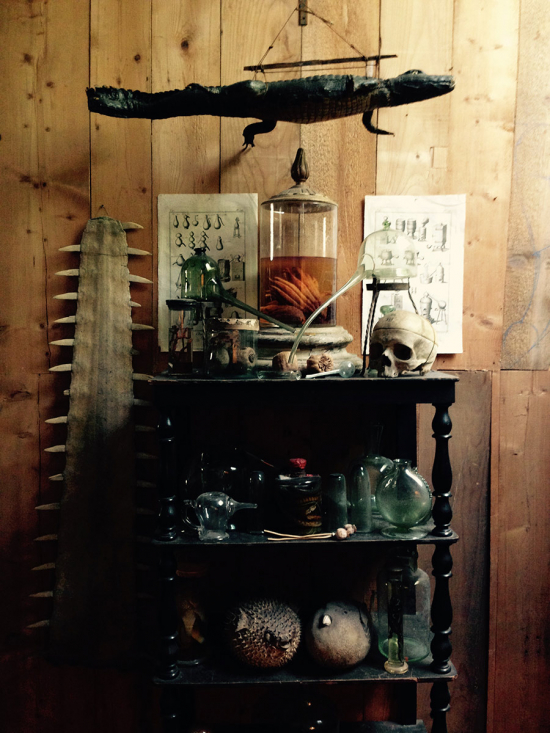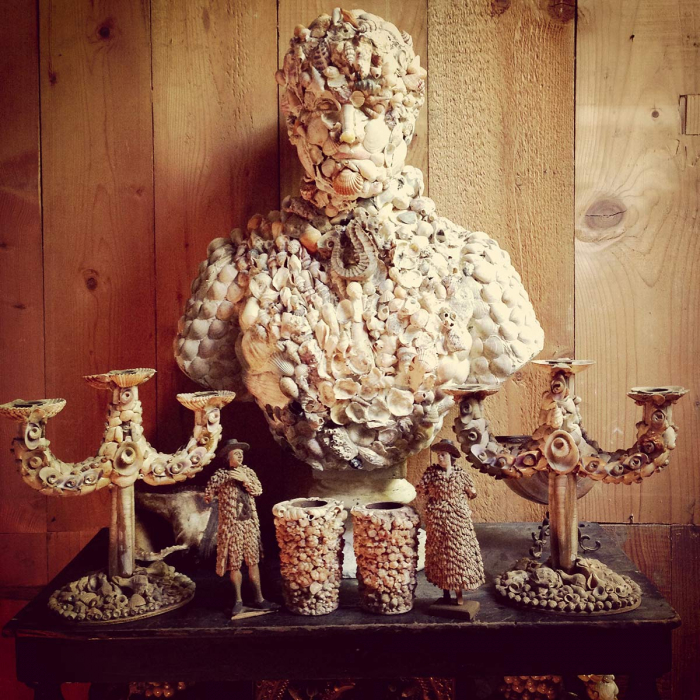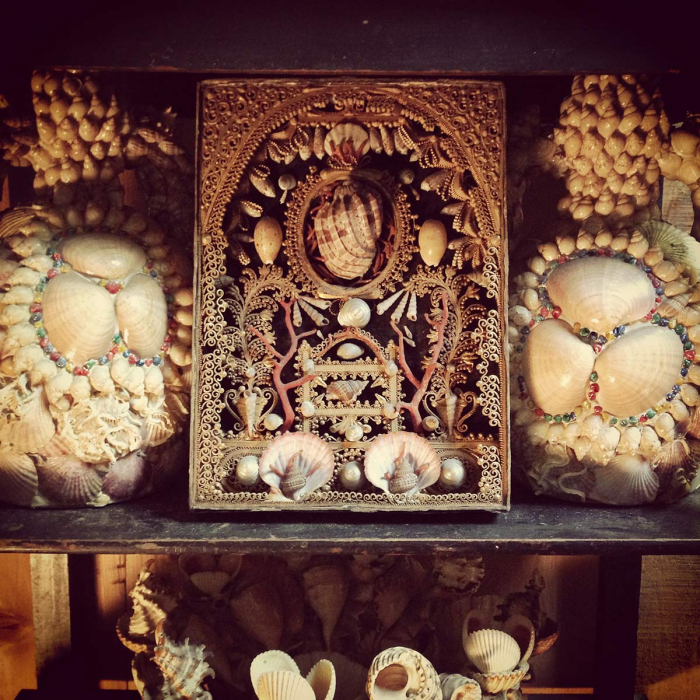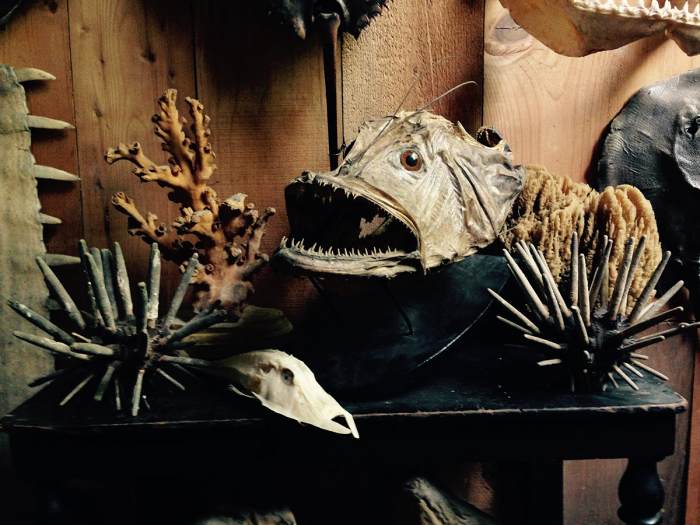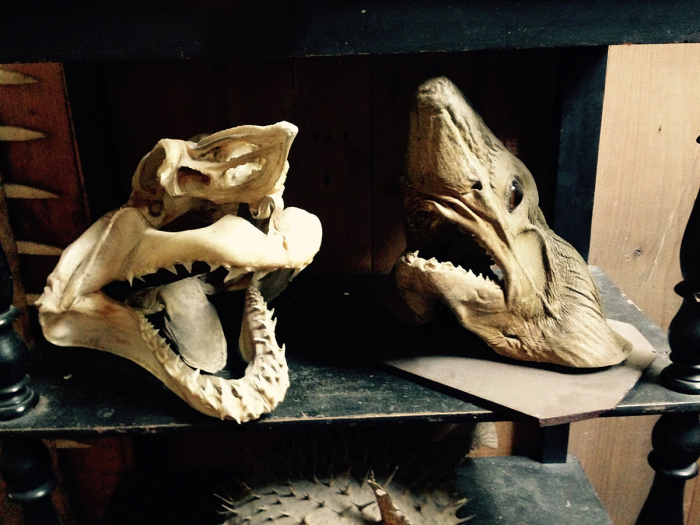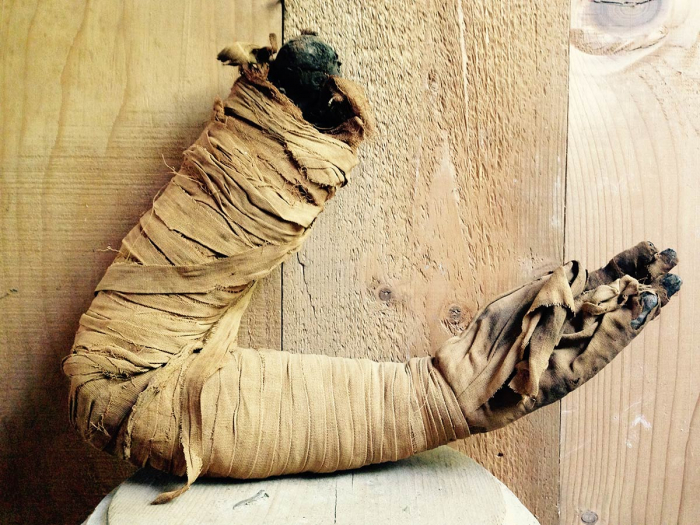I don’t remember exactly when I began. In my early childhood I was already an assiduous collector. I used to collect anything that a little boy can find in the country, because there is where I was raised and where I developed my sense of wonder. Those were the last days of agricultural civilization, when wonderful grannies told incredible things concerning nature and the stories they had lived themselves. I collected anything that could be found in the countryside at the time: natural oddities, archaeological objects, coins, wartime grenades... At the age of seven/eight, I had already set up my own museum. We lived in the country, there was plenty of room, and I still keep many things dating back to those years. I was particularly fond of skulls. I don’t know why. There was a graveyard nearby, so we used to go there and watch the exhumations. It was a normal thing. Gravediggers were well-known personalities in our small town. Moreover, at that time, a skeleton didn’t arouse a taste for the forbidden, as we were used to witness much more truculent scenes, such as the slaughtering of pigs. We were subjected to traumas that don’t exist anymore – I don’t know whether it is a good or a bad thing. Today I would be horrified at the sight of my granny wringing a chicken’s neck on Saturday but then it was part of the circus and we couldn’t take our eyes from that bloody show that terrified and at the same time fascinated us. There was no respect for animals. If a dog fell ill, there was no choice: it could live or it could die. Nowadays we would spend thousands of euros to cure it, whereas at that time you just left it alone, even if it was the dog of your life. People had a different attitude. There were no veterinarians. But the feeling of horror existed then as it exists now, the only difference being that today children experience it through movies, whereas at the time we were terrified by real events, which is quite another thing. The countryside with its mysteries and its stories marked the beginning of this passion of mine. When I was a little child, I had the opportunity to develop a penchant for adventure that our children cannot develop today. We enjoyed a total freedom. Time was at our disposal and we could use it as we liked, without any control. I remember that in my small town there was a country villa belonging to a noble Venetian family, packed full with Eighteenth century items. It had been kept closed after the death of the last heir: a crazy painter (you know, all nobles were truly crazy, because of consanguineous marriages) probably affected by a compulsive syndrome that made her stockpile a lot of stuff until her huge villa was turned into a wunderkammer. We children only needed to make a hole in the door and enter Toyland. There we found all that you can find in a wunderkammer and we took it. We stole things. When they sussed us out it was too late: we had already plundered the villa. This is how I developed a passion for antiques. At a later stage, when I started going to school, I added theory to practice. I enrolled in Ferrara’s artistic high school and those studies gave me the opportunity to visit public and private collections, even those closed to the public. Some enlightened teacher used to accompany us, and I must admit that what I have seen in the warehouses of Italian museums is unbelievable. In Italy the object of my interest is considered as a minor art. Differently from what happens abroad, Italy has always differentiated between art and minor art, dedicating to the latter a number of huge collections that are hidden from the public. In the 1970s, in Venice, there was a magnificent exhibition of an artist whose name I don’t remember and who started to work with cabinets of wonders; also in Venice, in the 1980s – when I started to study architecture – there was a biennale curated by well-known scholar Adalgisa Lugli who published amazing books about wunderkammer. She was the first one to study cabinets of wonders, encouraging a research work and a passion that have involved many other people so far. Antique dealers started to look for these objects and to bring them to flea markets. In the 1990s, although at the time I had a rewarding job that I liked very much, I decided to follow my passion and ventured. I started my first company and called it Naturalia Artificialia. The first museum shops were starting to take shape, therefore I created a small collection that I submitted to science museums: it included reproductions ranging from shells and corals mounted on decorative bases to scientific tools. I was very successful but, after I had sold a few containers, the Chinese came (they were already there at that time), contacted me and proposed me a collaboration that would guarantee me to reduce my costs by 40 per cent. I said no, but they went ahead anyway and got me out of the market. At the same time I had already started to buy things. Internet was born, a priceless tool that allowed me both to find information and to get in touch with people. I started to bustle about (I think this is the most adequate word in this case) and via eBay I started to sell a lot, which led me to meet Alessandro (Molinengo)* and buy a few items from him. At the time there weren’t many people who loved this genre and we were all scattered throughout Italy. I was looking for an accomplice so, in spite of the hundreds kilometres that separated us, Alessandro and I started a business cooperation. I already owned a big collection, I had rented a wide shop and furnished it with all my things, that I used to enjoy on my own. I didn’t want anybody to get in. But at a certain point I wondered what my purpose was and talked about it to Alessandro, who suggested we do something together in Turin. The Olympic Games were approaching and the town had radically changed: there were many opportunities, and we found a small shop in the town centre where I brought my collection. So we created the Nautilus and a new adventure began. We toured Europe and during those days we found a lot of fantastic things. Maybe it is a question of historical cycles, I don’t know, but now this miracle doesn’t happen anymore, either because collectors use the Internet (fortunately or not) to buy items even before they are on display, or because nothing really surprises me anymore. Now I like objects with an intellectual content but also with a connection with nature, I own a collection of coquillages ranging from Seventeenth to early Twentieth century. For example, this bust with shells in the style of Arcimboldo, the first and the only one I have ever seen (I have probably spotted two or three of them but they were recent reproductions and two were exposed in museums) and I was thrilled when I found it. Arcimboldo taught us to develop this sense of wonder by seeing an object from a different perspective, out of its context. Unfortunately there are few things of this kind around. I still like the scientific instruments that I also restore, but I keep them for myself. I love human skulls, although by now they have become a trend. I have followed and cultivated my passion and was enormously gratified. I have seen things you people… (he laughs). Paolo Brenni in Florence allowed me to visit the collections of the Istituto Tecnico Toscano that was closed after the war and still looks like it was during the Nineteenth century. Spared by several wars, it was never plundered and everything is still in perfect conditions. It hosts amazing collections, all closed to the public except for a small exhibition with a small selection of pieces. I have seen the glassworks of brothers Leopold and Rudolf Blaschka. Jellyfish, corals, glass invertebrate animals, and other – many! – amazing things. Museums have always been willing to welcome me and I managed to visit them all except for one: the Rizzoli museum in Bologna, which includes a collection hidden in a Fifteenth/Sixteenth century wing belonging to the original hospital, the one on the hills. The collection is named after Vittorio Dotti, I think, a luminary who started to collect medical tools at the beginning of the Twentieth century. He used to buy pieces from Christie’s and Renaissance pieces. Unbelievable things. A small catalogue published by Clueb offers you a glimpse of them. When I went to the Rizzoli museum, nobody knew about this collection and I was addressed to the library, which was full of treasures as well: Paolo Mascagni’s almost life-size anatomical plates, an enormous book on a baroque bookstand... amazing objects! But I didn’t have any chance. They didn’t let me in. It was the only time I didn’t manage to see a collection.
An amazing adventure. Then, as usual... it’s like it happens, for example, when you eat tortellini every day: in the end you want something else, and I am a very curious person, constantly shifting from one theme to another. I have always been fond of design and condemned by my own creative talent, so, with the help of my manual skills, now I devote myself to creating my own pieces. I work mostly with French galleries and with people in New York and Los Angeles, but when I come back home I switch on the computer and start to fly.
Of course we miss the Nautilus, but at least we can say we have had it. I had even managed to move it to Modena, but I must have handled some wrong skull, because the opening night coincided with the earthquake. Now I would like to build a theatre wing with the pieces of the collection and my works. We shall see.
I have always wondered where this fondness for antiques has come from, a passion that I have been cultivating since I was a child, although lacking a cultural background, because mine was an ordinary family living in the countryside, but little by little, step by step, everything makes sense in the end.

